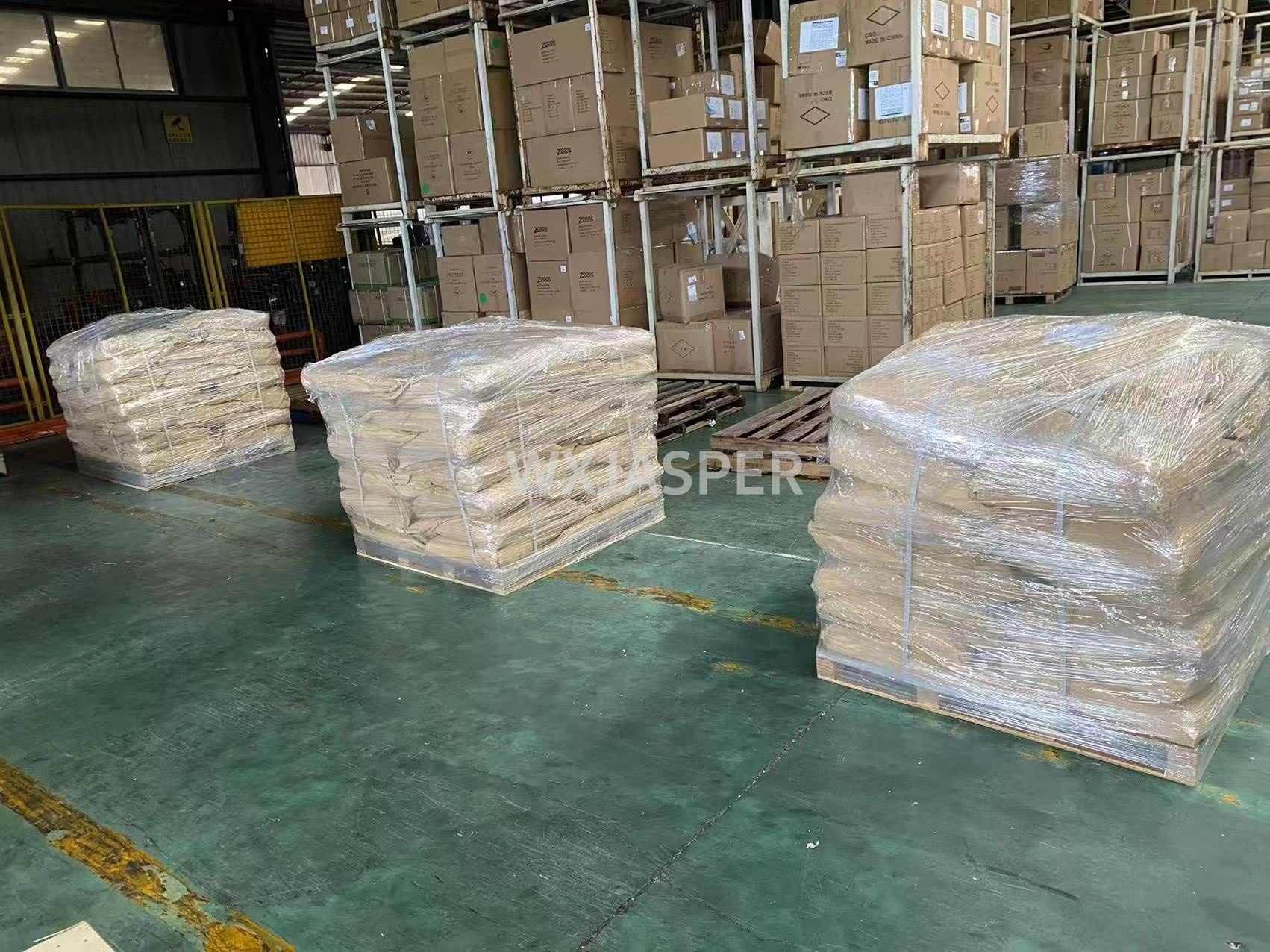Product Details
CasNo: 57-11-4
MF: C18H36O2
Appearance: powder
Delivery Time: 15 days
Packing: 25kg/bag
Purity: 99%
1. Basic Information
- Chemical Formula: C₁₈H₃₆O₂
- English Name: Stearic Acid
- Molecular Weight: 284.48 g/mol
- Appearance: It appears as white wax - like transparent solid or slightly yellowish wax - like solid. It can be dispersed into powder and has a faint tallow - like odor. The pure product is white, soft, shiny flakes.
2. Physical and Chemical Properties
- Melting Point: 67 - 72 °C
- Solubility: Insoluble in water, slightly soluble in cold ethanol, more soluble when heated. Slightly soluble in acetone and benzene, and easily soluble in diethyl ether, chloroform, hot ethanol, carbon tetrachloride, and carbon disulfide.
- Stability: It has good thermal stability and chemical stability, and is not easily oxidized. However, it can participate in reactions such as esterification and saponification.
3. Source and Production Process
- Source: It exists widely in nature. It has a relatively high content in animal fats. For example, it can reach 24% in beef tallow. It has a lower content in vegetable oils, such as 0.8% in camellia oil, 6% in palm oil, and as high as 34% in cocoa butter.
- Fractionation Method: It is prepared through steps such as hydrolysis, water washing, distillation, and decolorization.
- Pressing Method: Using animal and vegetable oils as raw materials, it undergoes high - pressure hydrolysis, washing, vacuum distillation, pressing, bleaching, and crystallization in the presence of a hydrolyzing agent (such as zinc oxide) to obtain first - grade stearic acid.
- Hydrolysis Method: In the presence of a decomposition agent (such as a sulfonated mixture of benzene and naphthalene), hardened oil, beef tallow, or sheep tallow is hydrolyzed, and then the finished product is obtained through acidification, distillation, pressing, and pickling decolorization.
4. Application Fields
- Plastics Industry: It is a PVC heat stabilizer, with good lubricity and relatively good light and heat stabilization. It helps prevent "coking" during the processing of PVC and can effectively stabilize the thermal properties in the processing of PVC films. It can also prevent the discoloration of finished films caused by sulfides.
- Rubber Industry: It is a widely used vulcanization activator in natural rubber, synthetic rubber, and latex. It can also be used as a plasticizer and softener. In the production of synthetic rubber, it can be used as an emulsifier, and in the manufacture of foam rubber, it can be used as a foaming agent. It can also be used as a release agent for rubber products.
- Cosmetics Industry: It is used to emulsify in vanishing cream and cold cream, turning them into stable and white pastes. It is also the main raw material for making almond honey and milk lotion. Stearic acid soap esters are widely used in the cosmetics industry.
- Food Industry: It is used as a lubricant, antifoaming agent, and as a raw material for food additives such as stearic acid glyceride, sorbitan stearate, and sucrose stearate.
- Other Fields: It can be used to produce stearates, such as sodium stearate, magnesium stearate, etc. It can be used as a solvent for oil - soluble pigments, a crayon smoothing agent, a wax paper polishing agent, etc. In the textile and dyeing industry, it can be used as a dispersant, softener, etc. In the paper - making industry, it can be used as a sizing agent, etc.
5. Packaging and Storage
- Packaging: Usually packed in woven bags or cartons lined with plastic bags, with a net weight of 25 kg or 50 kg per bag (or per carton).
- Storage: It should be stored in a cool and dry place, away from fire sources and heat sources, and avoid moisture. Comply with chemical storage regulations.


